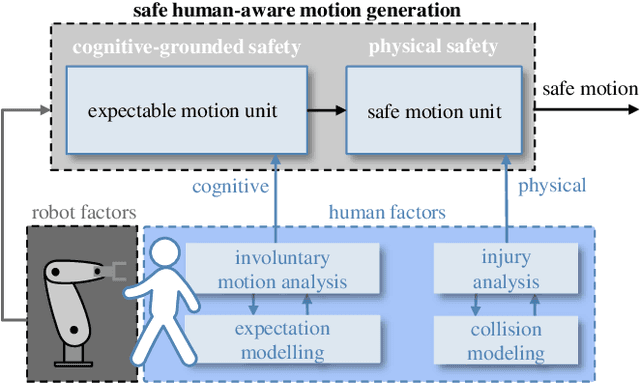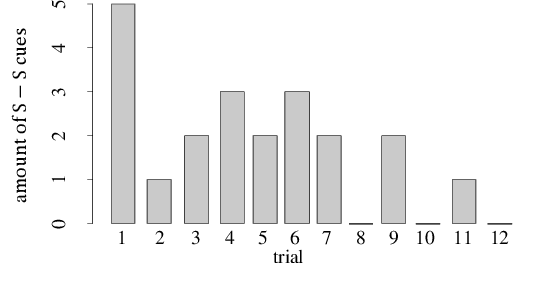Henning Mayer
Expectable Motion Unit: Avoiding Hazards From Human Involuntary Motions in Human-Robot Interaction
Sep 15, 2021



Abstract:In robotics, many control and planning schemes have been developed that ensure the human physical safety in human-robot interaction. The human psychological state and expectation towards the robot, however, are typically neglected. Even if the robot behaviour is regarded as biomechanically safe, humans may still react with rapid involuntary motion (IM) caused by startle or surprise. Obviously, such sudden, uncontrolled motions can jeopardize safety and should be prevented by any means. In this paper, we propose the Expectable Motion Unit (EMU) concept which ensures that a certain probability of IM occurrence is not exceeded in a typical HRI setting. Based on a model of IM occurrence that we generate through an experiment with 29 participants, the mapping between robot velocity, robot-human distance, and the relative frequency of IM occurrence is established. This mapping is processed towards a real-time capable robot motion generator, which limits the robot velocity during task execution if necessary. The EMU is combined with the well-established Safe Motion Unit in order to integrate both physical and psychological safety knowledge and data into a holistic safety framework. In a validation experiment, it was shown that the EMU successfully avoids human IM in five out of six cases.
 Add to Chrome
Add to Chrome Add to Firefox
Add to Firefox Add to Edge
Add to Edge